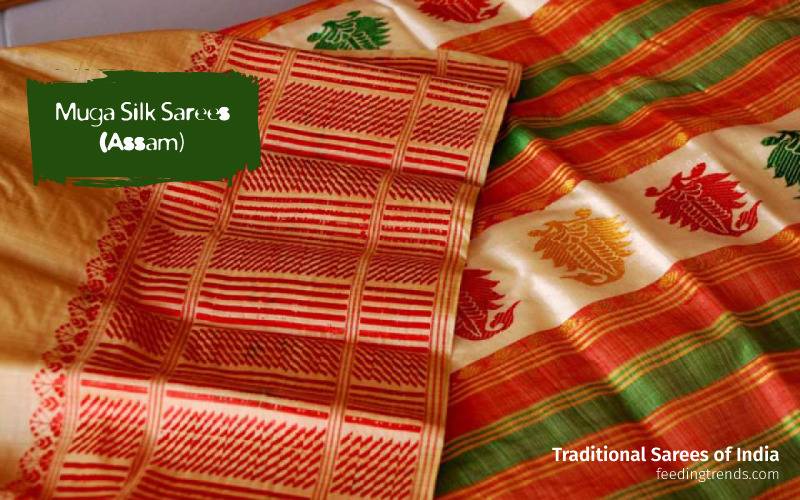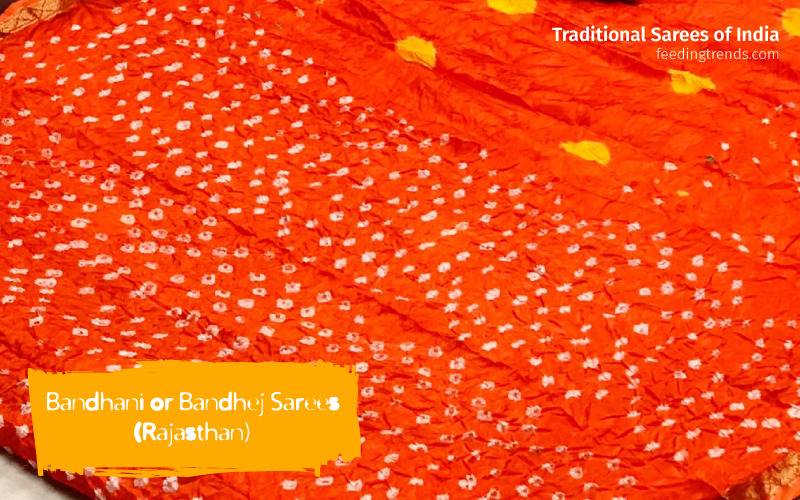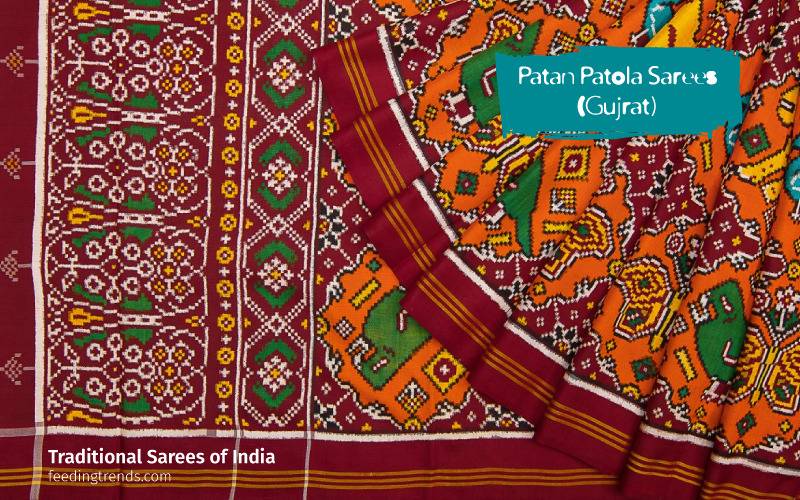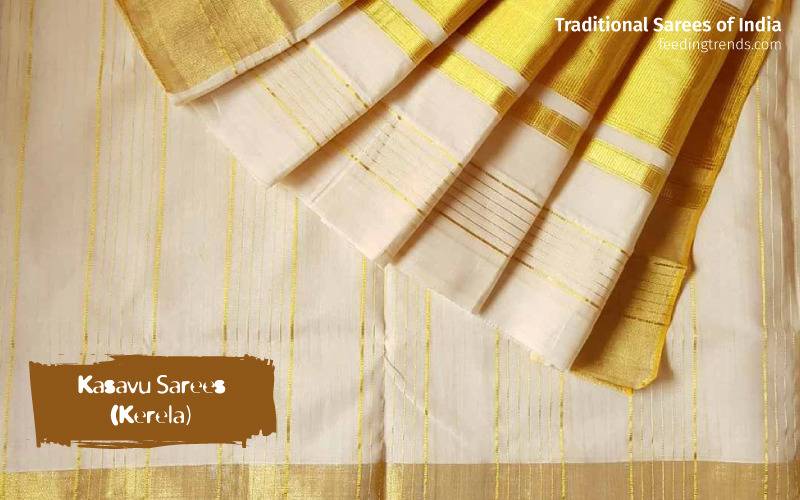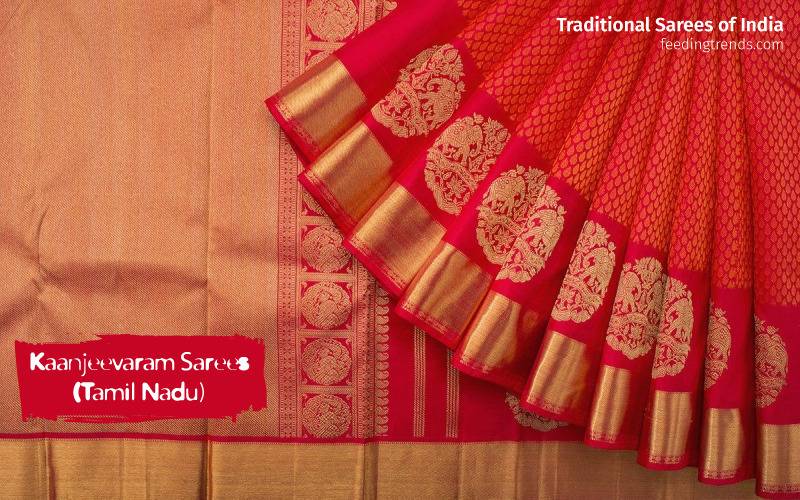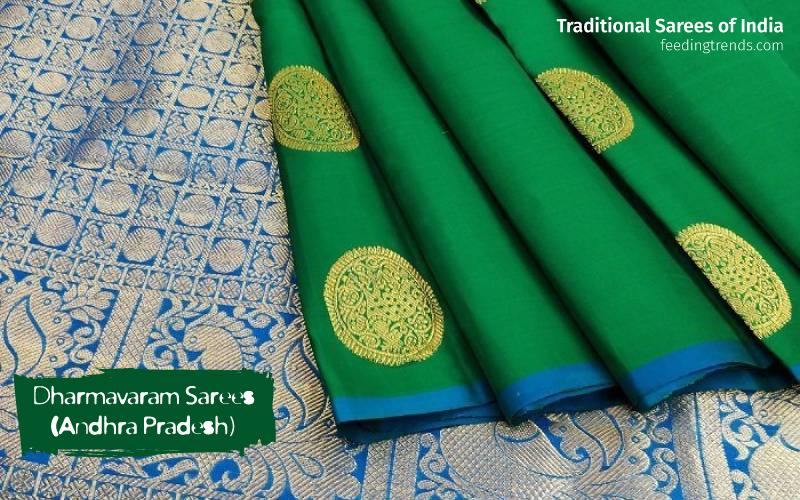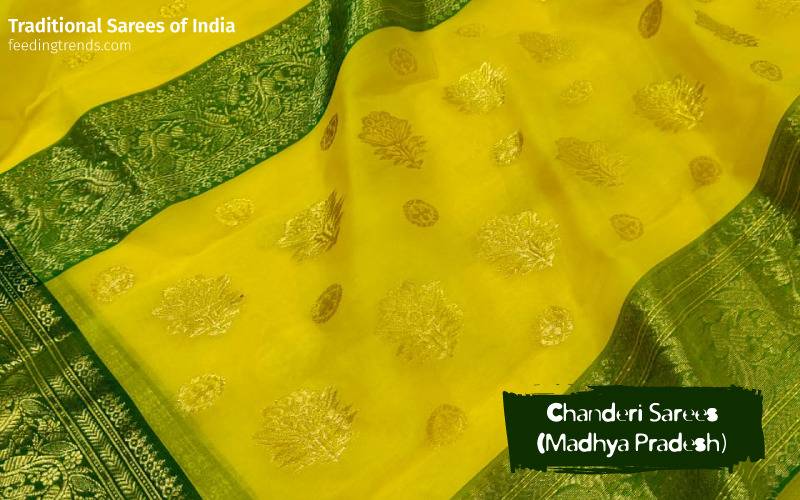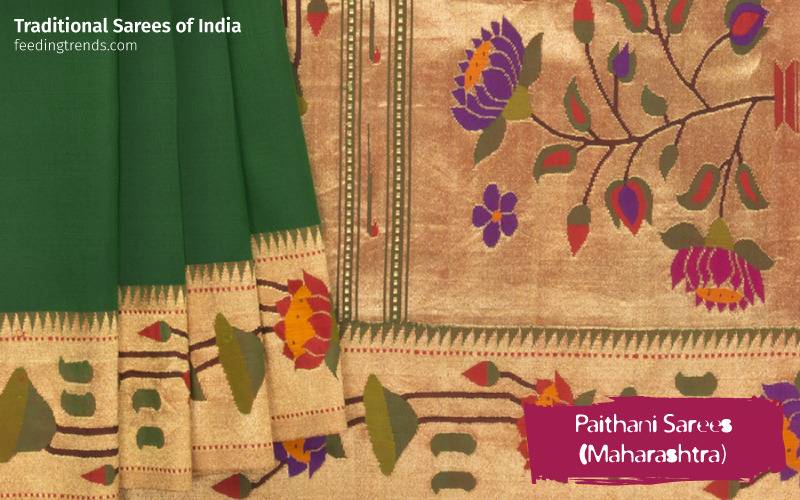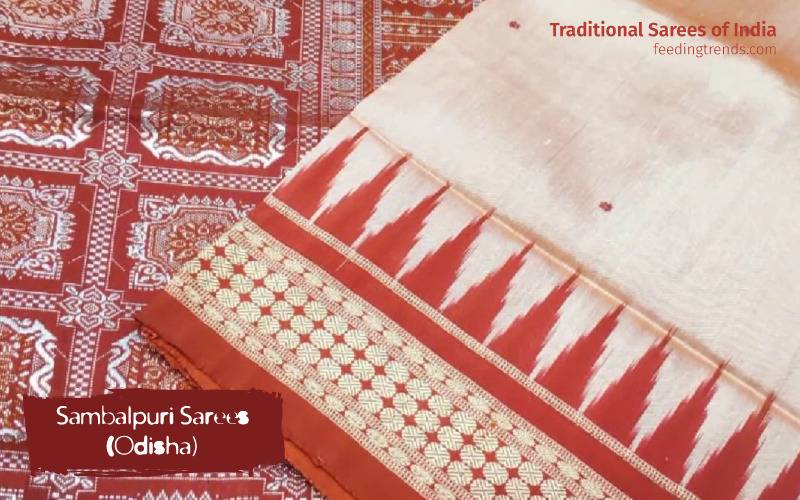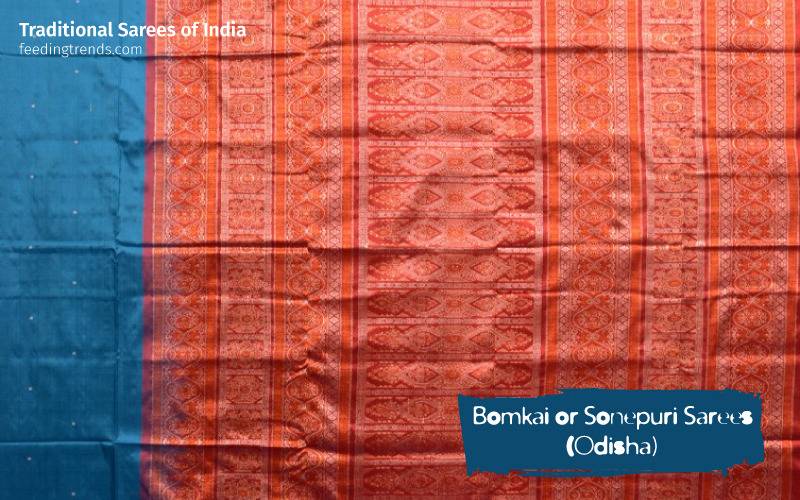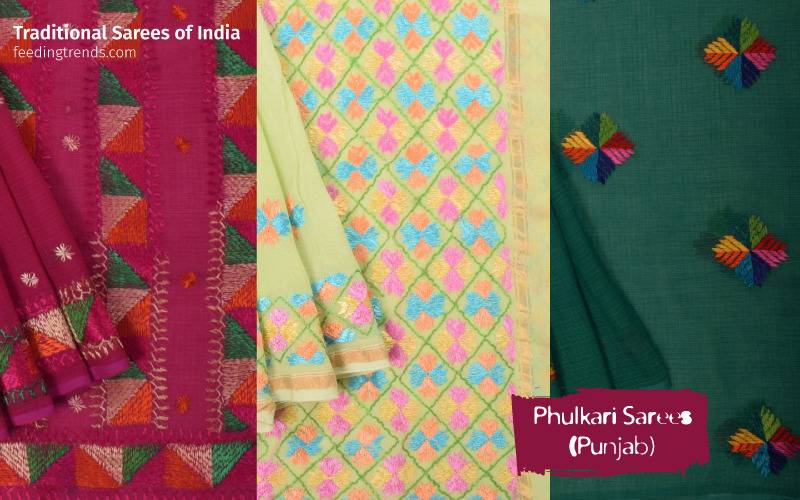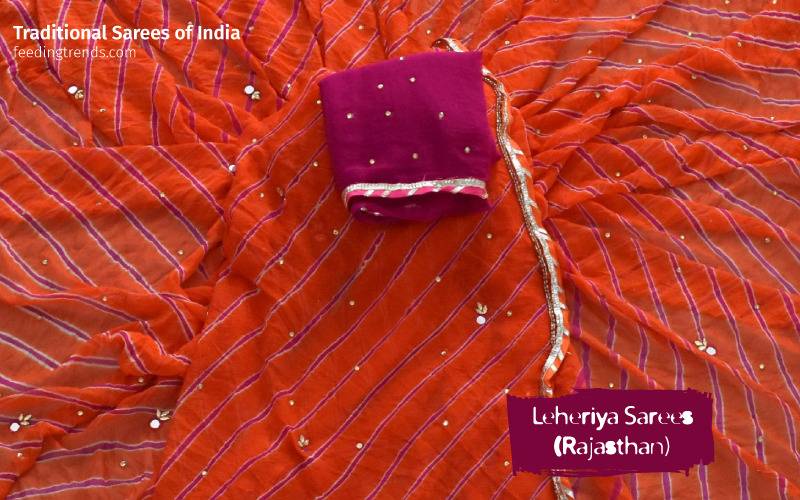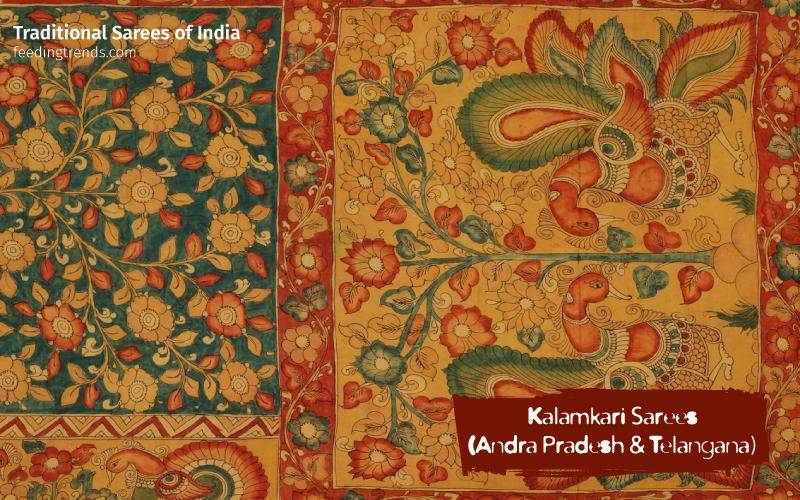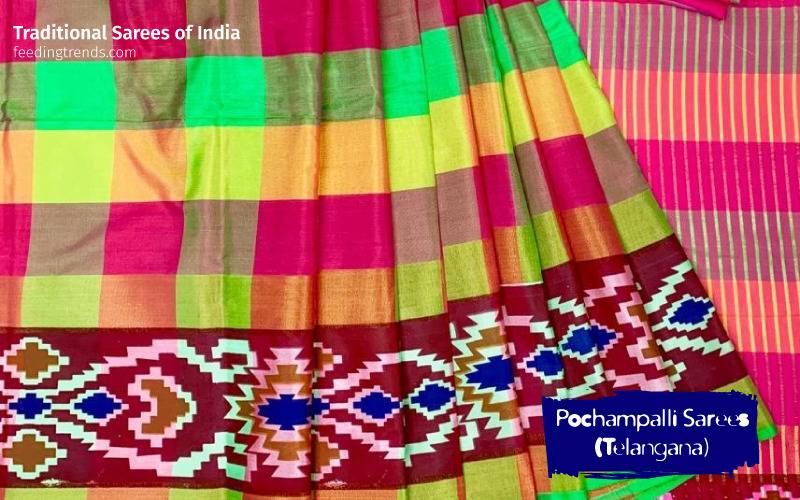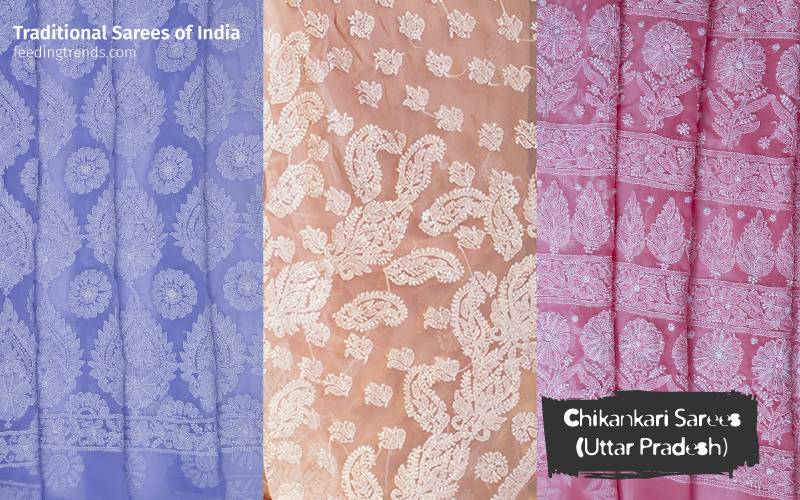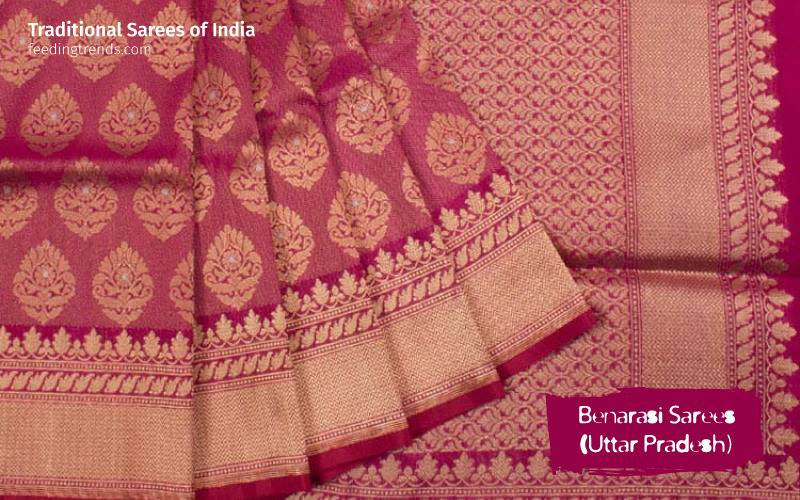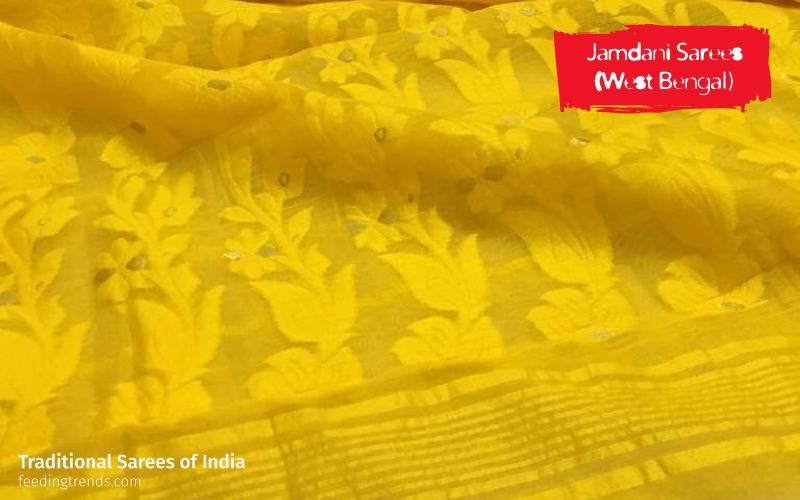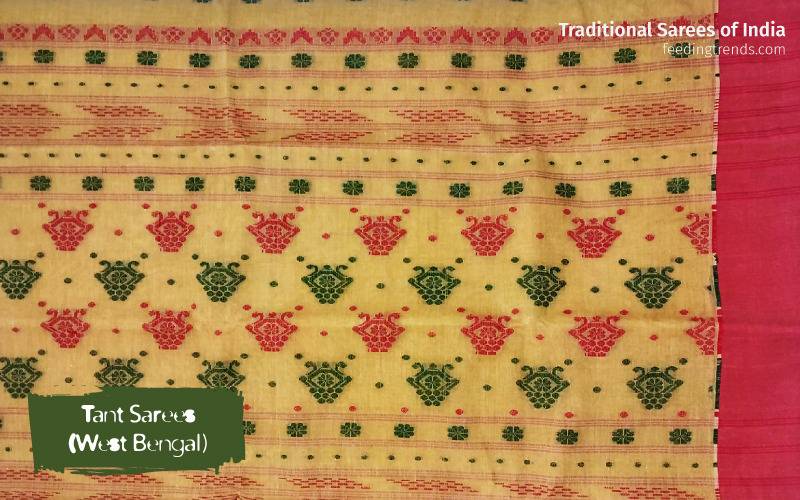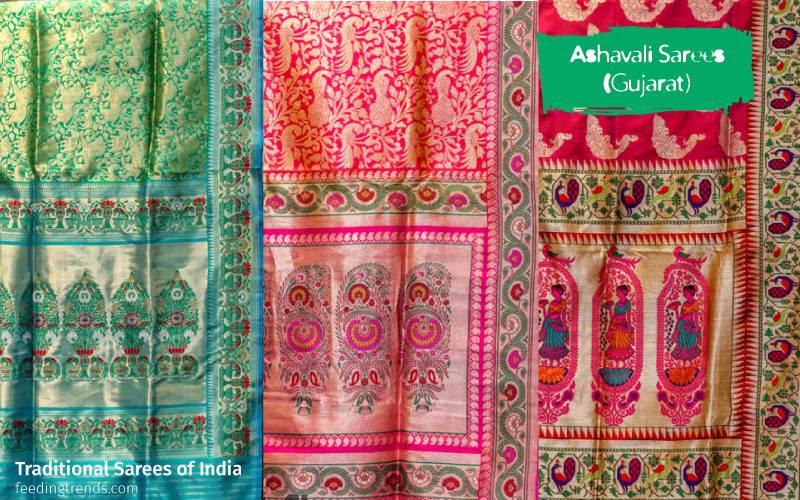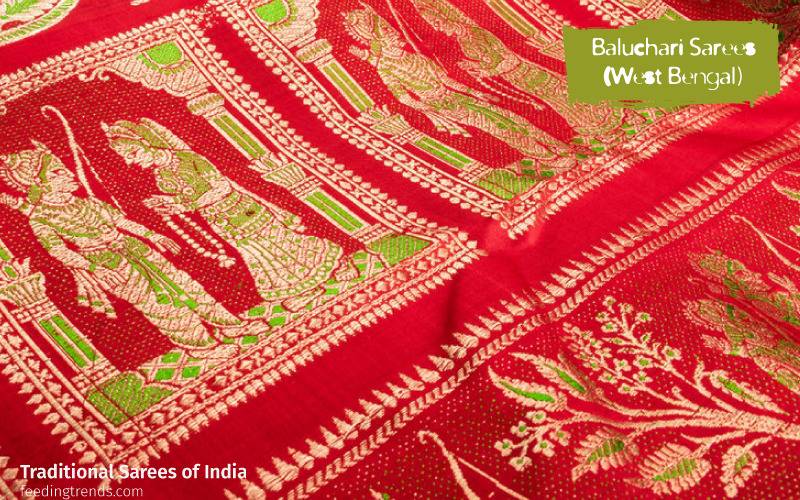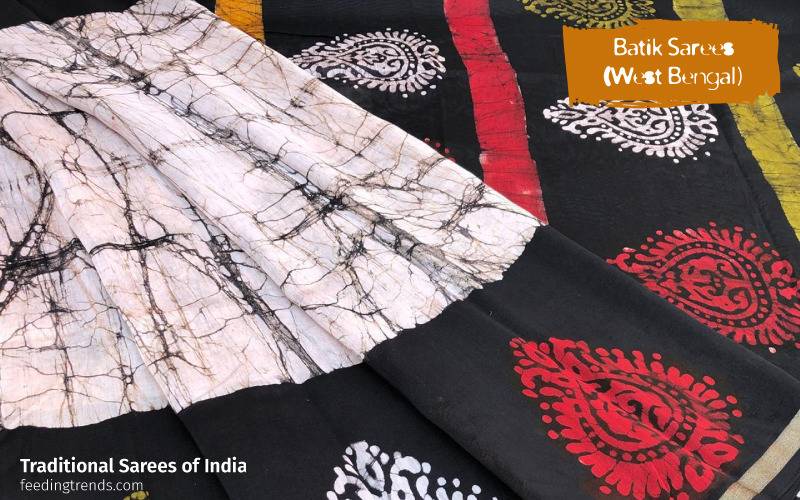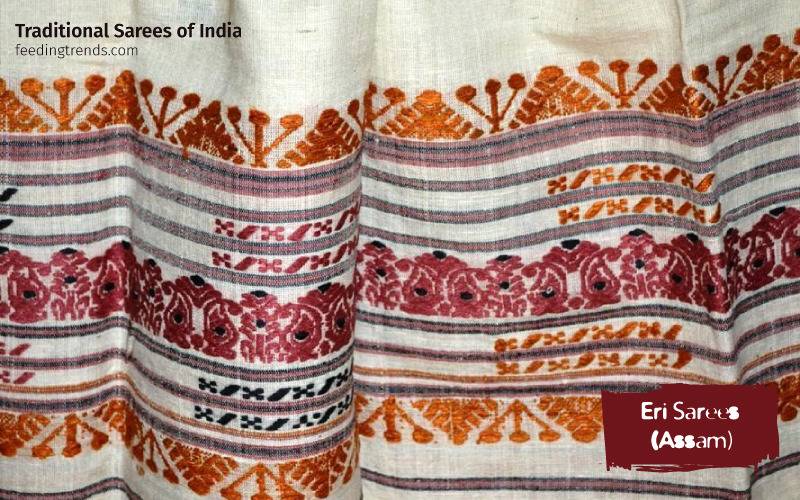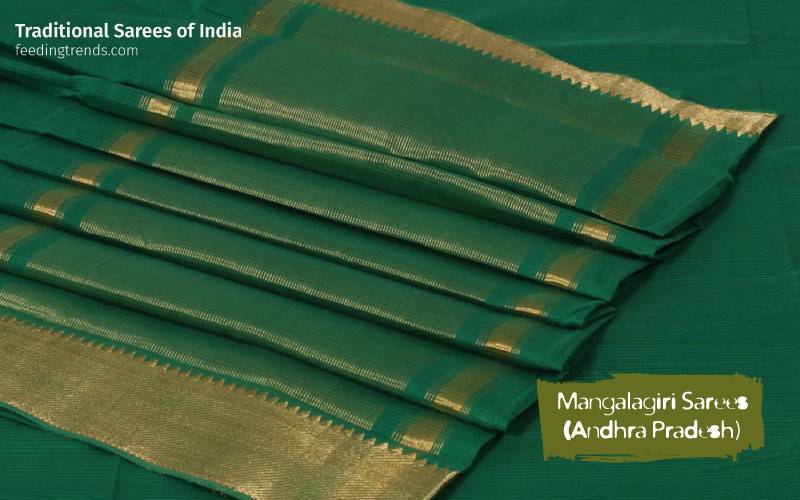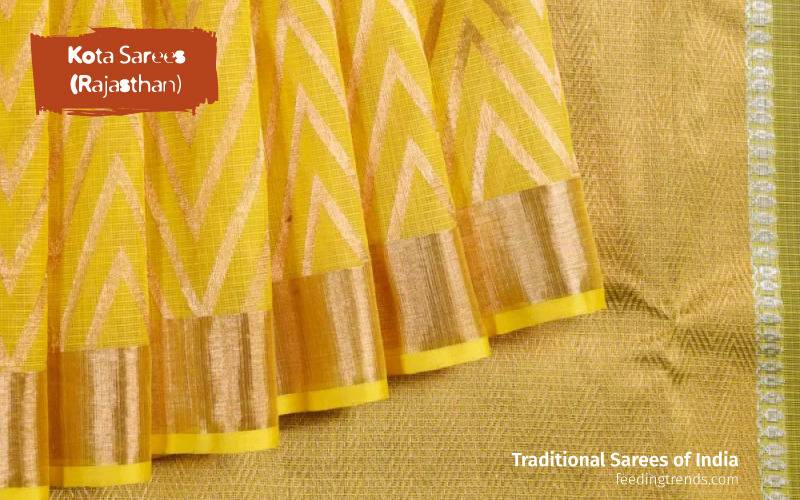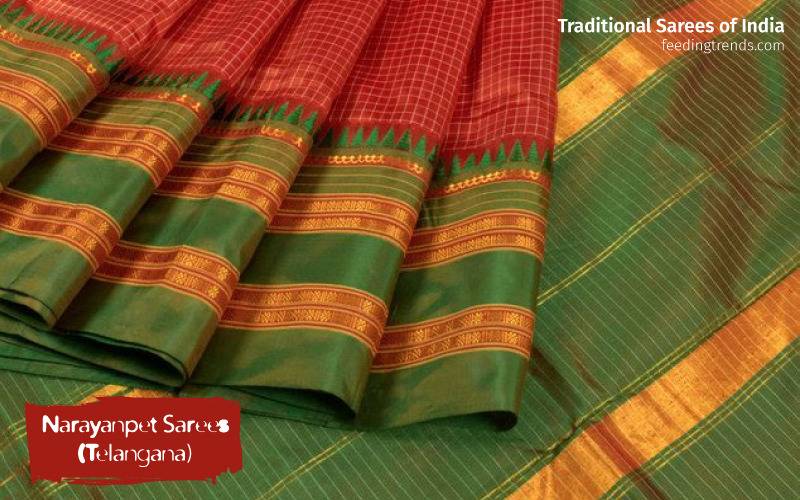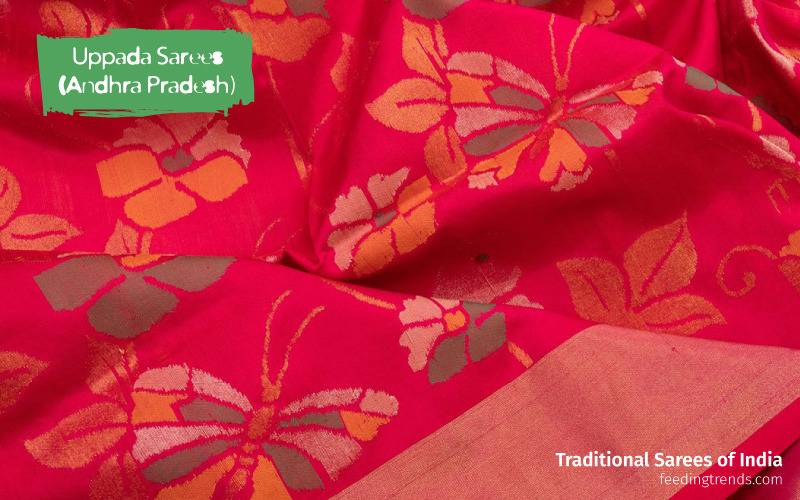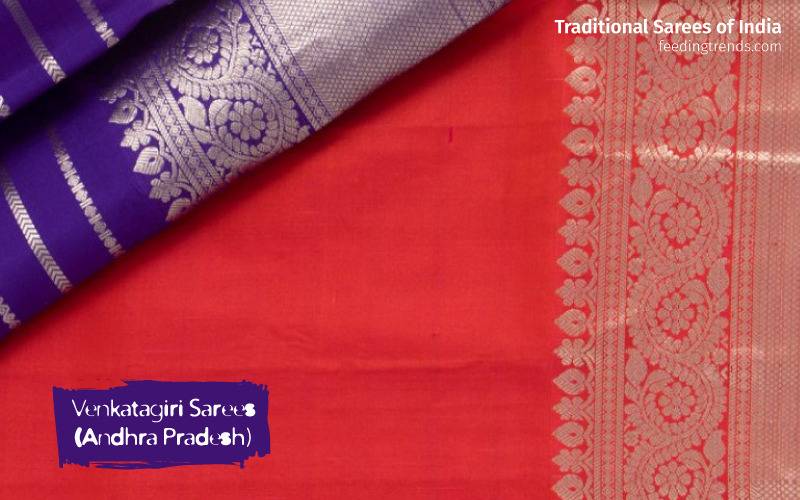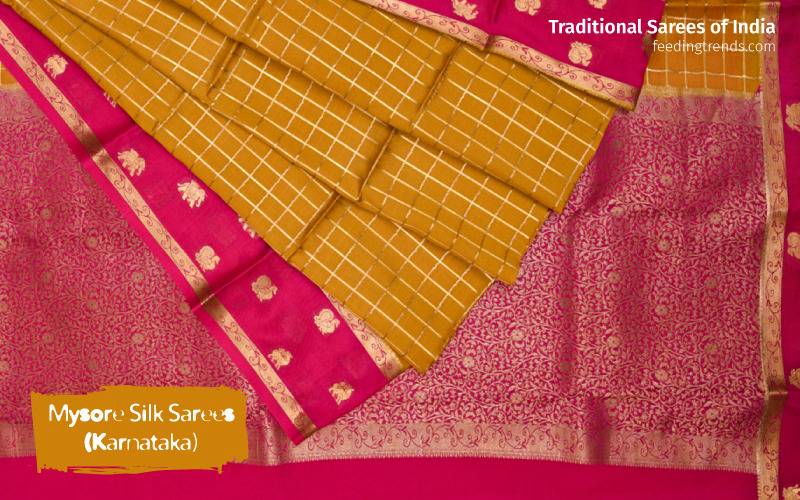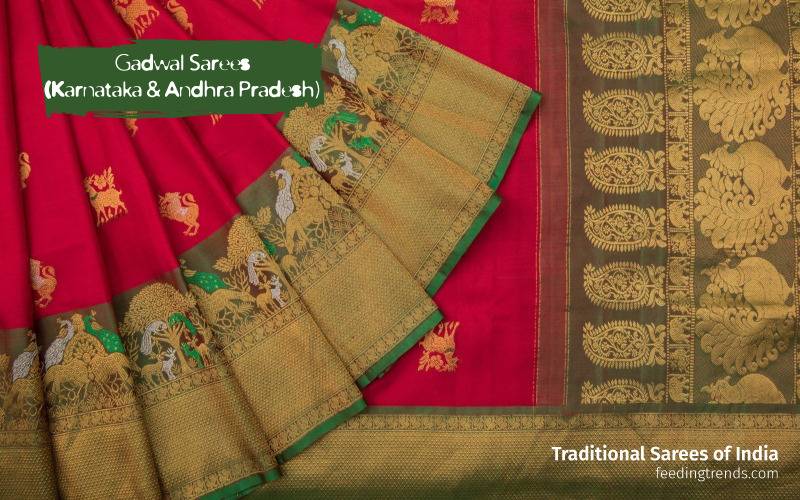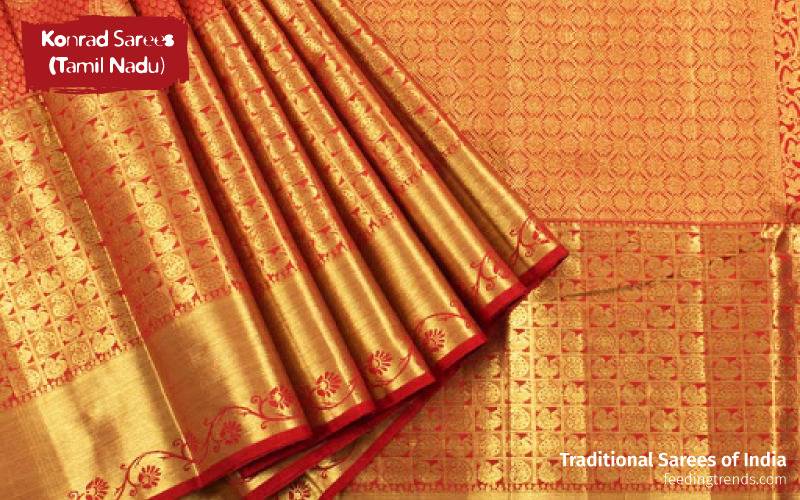
32 Types of Indian Sarees Which Define India, It's Culture and Tradition
We all know that India is a diverse country and so has its tagline - Unity in Diversity. Diversity doesn’t simply mean varied religion and the borders between the states. There is diversity in many aspects such as the food we eat, the languages we speak, the soil we sow and many more. The same way is the dress cult of India.
Dresses find the purpose to not only flaunt fashion but also to protect the dignity of a person. Saree is the identity of every Indian woman. It makes a woman beautiful, adds femininity and hence invokes divinity in her.
Right from Kashmir to Kanyakumari, saree takes different forms and each form is uniquely identified by the individual states. They are varied in terms of colour, the material, the weaving style, the design, the draping style and the occasions at which they are worn. Each style defines a culture and is a hue of elegance!
There are more than 30 types of Indian sarees. Here we have laid a parade of 30 popular types of sarees that would mesmerise you with far-fetched aspects. Here we go!
1. Muga Silk Sarees
Muga silk saree is owned by the Assam state of India. The silk material is extracted from wild silkworms. This material particularly is well known for its glossiness and shimmery appearance naturally with a golden tinge. It can be further dyed after bleaching and the more it is washed, the more lustrous it becomes.
Muga traditional silk saree was considered royal, usually woven as sarees and the Mekhela Sador, the traditional attire of Assam. It is one of the widely loved traditional sarees of India.
2. Bandhani or Bandhej Sarees
How can we step forward skipping a saree with alluring colours and vivid patterns? Bandhani or Bandhej adds feathers to the caps of Gujarat and Rajasthan cultures. The Bandhani type of Indian saree defines itself which means to tie.
The Indian saree acquires its property by dyeing the tied cloth in a particular pattern where each pattern comes out with the unique design. The colours used mainly are red, yellow, blue, green and black.
This Indian saree type is called differently as Bandhej, Piliya and Chungudi in states like Rajasthan, Gujarat, Punjab, Sindh and Tamil Nadu. Needless to say, this is among the popular traditional sarees of India. Before Gujarat and Rajasthan, Indus Valley Civilisation showed traces of this type of clothes.
3. Patan Patola Sarees
The next Indian saree type is Patan Patola, a Gujarati saree type specially produced at Patan, Gujarat. The Double Ikat technique is followed to make this type of saree which is very much complicated and hence, delicate.
The complication lies in the way the cloth is tied and dyed to give a specific pattern that is usually not repeated again in the 6-metre saree. So, every design or pattern is unique in the Patola type of Indian saree, which makes the style outstanding.
This dyeing technique has inspired many cultures all over the world like Japan, Indonesia, parts of America and etcetera. And so, Patan Patola is noted as one of the most important traditional sarees of India.
4. Kasavu Sarees
If you are a typical south Indian, you will have a desire to style yourself with the Kerala saree or the so-called kasavu!
As we know that the south Indian states are famous for handlooms, Kerala owns a handloom style of traditional saree called Kasavu. It is a white or off-white saree made of cotton and woven together with golden borders often matched with a red blouse.
A simple and elegant saree style is considered auspicious and worn on special occasions, especially Vishu and Onam.
This type of Indian saree is often seen styled for traditional dances of Kerala like Mohiniyattam and Thiruvathirakali. There are villages where the natives of those villages are dedicated to the hand-looming work to produce Kasavu and protect their culture.
The traditional sarees of Kasavu are an important part of the identities of Malayali culture!
5. Kanjeevaram Sarees
How would this Indian saree list be complete without Kanchivaram? Kanjeevaram or Kanchipuram silk is a handloom type of saree, exclusively produced from Kanchipuram, Tamil Nadu. It is recognised as a geographical indication by the Indian government and is the pride of Tamil Nadu brides.
Kancheepuram sarees, the traditional sarees of India, are woven out of mulberry silk thread and often have golden contrasting broad borders. It is well known for its traditional designs such as temple borders, stripes, checks and florals. Its quality holds this Indian saree type high.
There are a huge number of families devoted to the work of weaving Kancheevaram sarees without which this saree is impossible. People also from Karnataka and Andhra Pradesh opt for this type of traditional saree mainly for special occasions and festivities.
6. Dharmavaram Sarees
Dharmavaram is a handloom type saree originated from Anantapur, Andhra Pradesh. The handicraft traditional saree is made out of mulberry silk thread and zari. Tracing its origins, ancient temple roofs have depicted the designs of this famous Indian saree.
Dharmavaram was also recognised as the geographical indication of goods from Andhra Pradesh. It has been the main occupation for many families of Anantapur and thus, is an important type of Indian saree. If you happen to visit Andhra Pradesh, don't miss buying the traditional saree of Dharmavaram.
7. Chanderi Sarees
Chanderi sarees are hand-loomed usually with silk or cotton fabrics and are most beautiful of all Indian saree types. They find the roots from Chanderi, Madhya Pradesh and so own the name. The common designs of Chanderi are coin, floral art, peacocks and geometric designs with different patterns. Chanderi type of Indian sarees are best known as one of the finest silks of India.
8. Paithani Sarees
Paithani saree is named after the Paithan town of Maharashtra. The main purpose of this type of Indian sarees is for exports and was opted by only sophisticated customers. It is a gold and silk sari that was earlier woven out of cotton material but now it has changed completely as a silk product.
It portrays mostly square borders with peacock design and rest has spotted and plain designs. The kaleidoscopic design is a special aspect of Paithani saree.
9. Sambalpuri Sarees
The Sambalpuri saree is owned by the Odisha state of India. This traditional Indian saree is a handwoven product which is locally called as Sadhi.
Before it is woven, it undergoes a tie-dye process which makes this saree type special. The traditional designs such as shell, wheel and flower with red brick and white colours symbolise the native Odia culture.
10. Bomkai Sarees
Bomkai or Sonepuri saree is also from Odisha. This Indian saree of handloom type is identified as a geographical indication of India. The Bomkai traditional sarees have a tribal tint with mostly red, black and white colours as background.
The borders of the saree depict the ancient cultures and beliefs such as fish, which is the resemblance of success and wealth. Simplicity is Bomkai’s identity. Do you know? Aishwarya Rai wore a Bomkai silk for her wedding.
11. Phulkari Sarees
Phulkari is the embroidery style of Indian saree that is a Punjabi flair. Phulkari means something related to flowers and the embroideries are concerned with flowers and dense embroidery. The darn stitch is its speciality which makes the cloth invisible by intense embroiders with coloured silk threads.
The motifs include geometric shapes apart from flower themes. The Phulkari is a gift from the parents to every girl child in Punjab. Yes! Because women means auspicious!
12. Leheriya Sarees
Leheriya is a traditional saree of Rajasthan with tie-dye technique. The tie-dye patterns are waveforms which is why it is called Leheriya. Bright colours are the fascination of saree loving women!
Leheriya satisfies people of that kind with bright attractive colours. The material is thin cotton or silk opted not only for sarees but also for turbans and dupattas. Blues in Leheriya is its strength that quickly captivates the buyers.
13. Kalamkari Sarees
Here’s the one for new generation women! Kalamkari is the recent attire craze. It is owned by Iran and the Indian states namely Andhra and Telangana. This Indian saree is hand-painted or block-printed which is a distinctive technique to show off its style.
Natural dyes make it more ethnic. Kalamkari style is found in ancient depictions of Ramayana, Mahabharata and other epics. Picturising Buddha and Buddhism in Kalamkari is a recent trend.
14. Pochampalli Sarees
Pochampalli of Telangana district is best known for its Ikat dyeing pattern and is a geographical indication of India. Pochampalli stands out of all Indian traditional saree types with its incredible warp and weft weaving of different colours that shows as double shaded saree.
The material is either cotton or silk or a mixture of cotton and silk, called the sico. Natural dyes and geometric patterns make it more unique.
15. Chikankari Sarees
Chikan which literally means embroidery is a decoration style of Lucknow, India. The embroideries on this type of Indian saree were usually colourless on light pastel clothes of muslin, silk, chiffon, organza and so on. But now it is urbanised as colourful embroideries using silk threads.
Embroidery stitches include backstitch, chain stitch and hemstitch which are enticing.
16. Benarasi Sarees
Banaras or Varanasi of India is the mother of Benarasi type of Indian saree. The Benarasi is a finest silk cloth with golden or silver zari that identifies it uniquely. The designs and embroideries are much detailed and so it is comparably heavy. The foliate motifs and florals are its sole designs.
The intricate weaving, lustrous effect and net pattern of Benarasi sarees is quirky. This traditional Indian saree best suits for festivals and special occasions.
17. Jamdani Sarees
Jamdani or Dhakai is a fine muslin type of saree from Narayanganj, Bangladesh. Jamdani traditional saree earned geographical indication for Bangladesh. It is a handloom fabric with affluent motifs that are either white or grey in colour. The weaving is done in such a way that the patterns shimmer on the surface.
18. Tant Sares
Draping sarees in summers might be a discomfort. Tant solves this for you with its light and transparent feature which is suitable for humid climatic conditions. This type of Indian saree has its roots from all over Bengal and parts of Bangladesh. The old weaving style of Bengal is used to weave Tant with thick borders, floral and artistic motifs.
19. Ashavali Sarees
Ashavali finds its roots from Ahmedabad, Gujarat, India. Ashavali type of Indian saree is best known for brocade weaves basically used for decorating canopies, camels and elephants. This traditional saree of Ahmedabad was under demand by royal and noble families.
The borders are enamelled and depict the pictures of chand-tara, parrot and peacock motifs. The designs also include embroidery, beadwork and jaliwork.
20. Baluchari Sarees
Baluchari from Bangladesh is a type of Indian saree that is famous for depictions from ancient epics and mythological scenes on the saree. It has gained geographical indication status in India. A Baluchari saree needs a week of time to complete weaving.
First, the silk is extracted from cocoons, next yarned and motif is made, finally it is weaved into saree. This type of saree was mainly opted by upper class families of Bengal.
21. Batik Sarees
Batik is an Indian saree type with unusual design patterns and processes. This makes it unique. The place of origin is said to be Indonesia and is actively produced in Bengal. The design printing technique of this traditional saree of Indonesia and India uses wax and colour dyes to bring a particular style of finished patterns.
The wax is used to resist the dye within the pattern. Apart from sarees, this pattern technique is used in leather goods too. It was Rabindranath Tagore who took Batik culture all the way from Indonesia and now it is produced in several parts of India.
22. Eri Sarees
Eri silk is an exclusive silk variety harvested in north eastern states of India, parts of China and Japan. The silk is known for its durability, elasticity, fineness and easily blends with other fabrics like wool. This is special textured silk that is weather adaptive like it is warm during winters and cool during summer.
Eri Indian saree has drawn the attention of many around the world because of its cocoon harvest culture in which extraction of fibre is harmless to the worm residing in it. Thus, it is known as non-violence silk.
23. Mangalagiri Sarees
Mangalagiri is a place in Guntur district of Andhra Pradesh and the saree produced from here is named after it. It is a handicraft woven type of saree with warp and woof interlacing style. The Nizam design is one of its distinctive features. The yarn used is pure cotton and borders with silver and golden zari. It is opted for devotional purposes by the natives of Guntur.
The Mangalagiri traditional saree was recognised as the geographical indication of Andhra. It is also among the beautiful sarees of India.
24. Kota Sarees
Kota Doria is a light-weighed, finely woven traditional saree primarily produced in Kota, Rajasthan. This Indian saree is best known for its checked or square-like patterns called the khats. Nowadays, this type of fabric is hand block printed, embroidered and is finished in many other ways.
25. Narayanpet Sarees
The Narayanpet silk or cotton saree is produced by the Narayanpet town of present Telangana. The speciality of this Indian saree is its checked designs with contrasting silver or gold zari borders that depict ethnic patterns like temples.
The sarees are more rich in look with bright colours which are dyed using natural colours extracted from vegetables. Easy to afford cost and light weight are its significant features. The Narayanpet type of sarees is recognised as a geographical indication of Telangana.
26. Uppada Sarees
Another light weight Indian saree is Uppada Jamdani from Andhra Pradesh. Jamdani means vase with flowers in Persian. The golden zari and finest silk are woven into saree with the lightweight. The body is usually cotton and the pallu is of silk material. The designs show up a variety of patterns like geometric, flowers or leaves, etc.
27. Venkatagiri Sarees
Venkatagiri traditional sarees are produced by natives of Venkatagiri town of Andhra Pradesh. This Indian saree is declared as a geographical indication for Andhra. Earlier in the 16th century, these handicraft sarees were specially woven for royal families, the queen and upper class people.
The vat and naphthol dyeing is a unique process carried out for dyeing Venkatagiri sarees. Fine cotton and zaris are woven into different varieties of Venkatagiri sarees such as Venkatagiri-putta, Venkatagiri silk and Venkatagiri 100, which is popular among all.
30. Mysore Silk Sarees
Mysore silk sarees are one of the best south Indian sarees of India. It is comparably light in weight. The bright colours and traditional look makes it feel rich. This type of traditional sarees is either plain or embroidered.
31. Gadwal Sarees
Gadwal sarees take inspiration from Andhra and Karnataka cultures together as Gadwal town is located in such a way. The handicraft traditional sarees come out as either pure silk or cotton or silk-cotton. This type of Indian saree is best known for zari works with rich borders.
32. Konrad Sarees
Konrad sarees were exclusively woven for temple deities and hence got the name as temple sarees. The wide borders of this traditional saree type are the matter of fascination that picturises natural elements like flowers, creepers, vines and also animals like peacock, elephant, parrots etc. The body is mostly found to be of checked or striped designs. It is relatively light in weight when compared to other Indian silk sarees.
It is done! Finally, it is done with 30 awesome Indian traditional sarees from all over India. Each Indian saree has its own culture, tradition and motive which makes it distinct from the other. Surely, women are blessed to have gifted with such assets by the god, to the living gods on earth! This would surely tempt you to own at least one from each type in your wardrobe.
Read More:
- 8 Indian Classical Dance Forms To Know Our Country More Closely
- 33 Facts About India Which Make You Feel Proud
Explore: Feeding Trends | Events
Appreciate the creator
